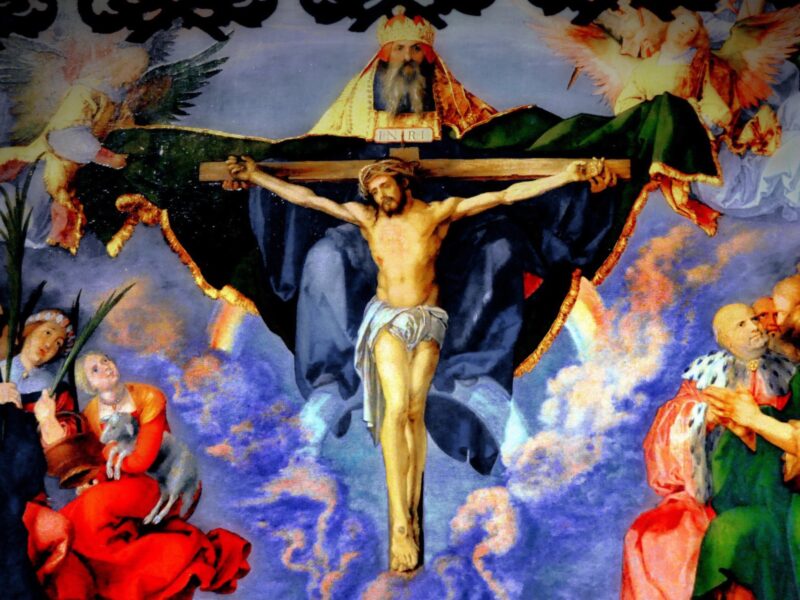
Mine Eyes Have Seen Thy Salvation
Feast of the Presentation of the Lord. Fr David Goodill preaches on how Luke directs our gaze to the light of Christ.
With the story of Jesus’ presentation in the temple Luke brings his nativity narrative to an end. The narrative began in the temple with the appearance of an angel to Zechariah, announcing that his wife Elizabeth will bear a son. We are told that Zechariah and Elizabeth
were both righteous before God, walking in all the commandments and ordinances of the Lord blameless. (Luke 1:6)
Likewise the narrative ends in the temple. This time with a man, Simeon, who is described as
righteous and devout, looking for the consolation of Israel,
and a woman Anna, concerning whom Luke says:
She did not depart from the temple, worshipping with fasting and prayer night and day.
Although many of our images of Christmas centre on Bethlehem and the birth of Jesus, Luke wishes to move our vision beyond the manger to Jerusalem and the temple. So our gaze moves backwards, as through the figures of Zechariah, Elizabeth, Simeon and Anna, Luke represents the expectation of Israel that God would send his Messiah to save the people.
This expectation centred upon Jerusalem and the temple, hence in today’s first reading from Malachi we read
And the Lord you are seeking will suddenly enter his Temple.
Luke also moves our gaze forward, and the presentation of Jesus in the temple foreshadows his later entrance into Jerusalem, where he will present himself to his Father upon the cross, as the true sacrifice for our salvation. All of this is summed up in Simeon’s prophecy.
We are told that Simeon, inspired by the Spirit, entered the temple as Jesus is brought in. Simeon immediately recognizes in the child the fulfilment of the salvation God has promised, and with this recognition he knows that it is time for him to depart in peace. The child is the fulfilment of a life spent living in expectation, an expectation that sums up and represents all of Israel’s waiting for the Messiah.
Yet Simeon also looks forward, and declares that this child is
a light of revelation to the Gentiles, and for glory of thy people Israel.
Jesus is the one who fulfils all Israel’s hopes, and in doing so he will extend God’s offer of salvation to all peoples. Again, Jerusalem and the temple act as a key for understanding how Luke widens our vision, for in the Acts of the Apostles Luke will describe how under the action of the Holy Spirit the Church will grow out from Jerusalem to all ends of the earth.
So, in presenting the nativity story, Luke moves our gaze backwards into the history of Israel and forwards to the sacrificial death of Jesus and the subsequent Spirit-led growth of the Church. There is another dimension, however, that Luke uses to deepen our vision, and this is best summed up in the image of light. Simeon describes Jesus as
a light for revelation to the Gentiles,
and afterwards tells Mary that in her child
thoughts out of many hearts may be revealed.
Jesus is the light from above, who enters into the darkness of human history to bring all our deeds, good and bad, to account. Luke directs our gaze upwards, so that we can see how the whole of human history is transformed by the entrance of God into our world in the person of Jesus Christ.
Again Jerusalem and the temple are important for understanding this movement in Luke, for the temple was the place where humanity encountered divinity, where God entered into our world. So Luke is telling us that now, in the child Jesus, we have the new temple, the place where God dwells with his people.
In the person of Jesus Christ, in this small child, whom Simeon holds in his hands, Luke connects the whole of our history. For in this child God enters into and transforms that history, so that all our lives, through this child, are united and seen in the light of eternity.


